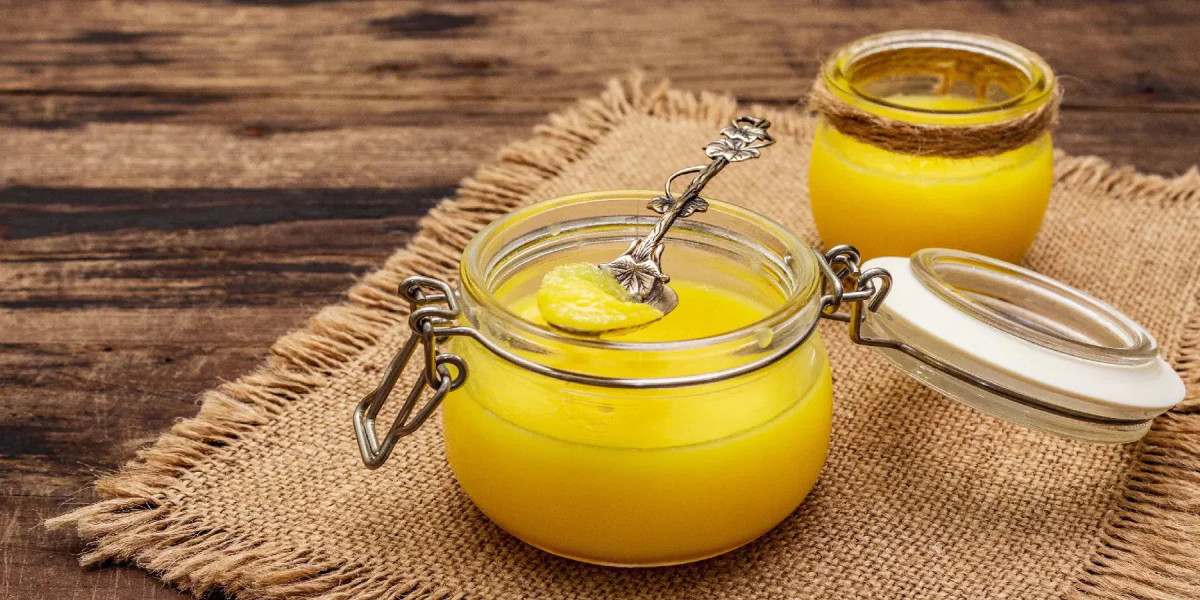In the heart of every Pakistani kitchen, nestled amongst the spices and aromas that define our vibrant cuisine, lies a treasure: Desi Ghee. More than just a cooking medium, it's a cultural touchstone, a nostalgic flavor, and a symbol of wholesome goodness passed down through generations. From the bustling streets of Karachi to the serene valleys of Kashmir, the rich, nutty fragrance of Desi Ghee evokes a sense of home and tradition.
But in a world increasingly dominated by refined oils and processed foods, why does desi ghee continue to hold such a special place in the Pakistani heart? Let's delve into the golden goodness and explore why this traditional fat remains an indispensable part of our culinary landscape.
A Taste of Nostalgia: The Memories Woven into Ghee
For many Pakistanis, the aroma of Desi Ghee is inextricably linked to cherished childhood memories. The comforting scent wafting from Grandma's kitchen as she prepared her legendary aloo parathas, the rich flavor enhancing festive sweets like gulab jamun and jalebi, the simple satisfaction of warm rice drizzled with a spoonful of pure ghee – these are the sensory experiences that have etched Desi Ghee into our cultural identity. It's a taste of home, a connection to our roots, and a reminder of simpler times.
Beyond Flavor: The Traditional Wisdom of Ghee
While the taste is undeniably delightful, the reverence for Desi Ghee in Pakistan goes beyond mere culinary preference. Traditional Ayurvedic practices, deeply ingrained in our subcontinent's heritage, have long recognized the therapeutic properties of ghee. It's considered a rasayana, a rejuvenator that nourishes the body and mind.
Our elders have always extolled the virtues of ghee:
- Digestive Aid: They believed it aids digestion, stimulating the secretion of stomach acids and promoting gut health. A spoonful of ghee after a meal was a common practice.
- Source of Energy: Rich in healthy fats, ghee provides sustained energy, keeping you feeling fuller for longer. This was particularly valued in agrarian communities requiring physical stamina.
- Nourishment for Body and Mind: Ghee was believed to nourish the brain, improve memory, and promote overall well-being. Massaging newborns with ghee was a common practice for strong bones and healthy skin.
- Immunity Booster: Packed with fat-soluble vitamins like A, D, E, and K, ghee contributes to a robust immune system.
While modern science continues to explore these traditional claims, the anecdotal evidence passed down through generations speaks volumes about the perceived benefits of Desi Ghee.
The Making of Gold: The Traditional Process
The way Desi Ghee is traditionally made in Pakistani households is a labor of love. It's a slow and deliberate process that transforms milk into this golden elixir. The most common method involves:
- Collecting Cream (Malai): Over several days, the cream that rises to the top of boiled milk is carefully collected and stored.
- Churning: This accumulated cream is then churned, either manually using a traditional wooden churner (madhani) or with a modern blender, until butter separates from the buttermilk.
- Melting and Simmering: The butter is then gently heated in a pot over low heat. As it melts, milk solids separate and settle at the bottom.
- Straining: Finally, the clear, golden liquid – the pure Desi Ghee – is carefully strained to remove any remaining solids.
This meticulous process yields a ghee with a distinct aroma and a rich, granular texture that is highly prized. While commercially produced ghee is also available, many Pakistani families still prefer the homemade variety for its perceived purity and authentic flavor.
Desi Ghee in Pakistani Cuisine: A Culinary Cornerstone
Desi Ghee is the unsung hero of countless Pakistani dishes, lending its unique flavor and richness to both savory and sweet preparations.
- Savory Delights: From the crispy layers of parathas and the flavorful base of salans (curries) to the aromatic biryanis and the smoky char of grilled kebabs, Desi Ghee elevates the taste profile of these iconic dishes. A dollop of ghee on lentil dishes like daal chawal adds a touch of indulgence.
- Sweet Indulgences: No Pakistani celebration is complete without sweets made with Desi Ghee. The melt-in-your-mouth texture of barfi, the aromatic sweetness of halwa, and the crispy perfection of fried treats like gulab jamun all owe their magic to this golden fat.
Even simple everyday meals are often enhanced with a touch of ghee. A drizzle over steamed rice, a tempering of spices in ghee for lentils, or simply spreading it on roti adds a layer of flavor and satisfaction that is deeply ingrained in our culinary habits.
Navigating the Modern Landscape: Choosing Quality Desi Ghee
In today's market, it's crucial to be discerning when purchasing Desi Ghee. Look for ghee that is:
- Pure and Unadulterated: Opt for ghee made from pure cow or buffalo milk without any added vegetable oils or artificial flavors.
- Traditionally Made (if possible): While commercial options exist, traditionally made ghee often retains a richer flavor and aroma.
- From Trusted Sources: Choose reputable brands or local producers known for their quality.
The Enduring Appeal of Desi Ghee
Despite the influx of modern cooking oils, Desi Ghee continues to hold a special place in the hearts and kitchens of Pakistanis. It's more than just a fat; it's a symbol of tradition, a source of nostalgic comfort, and a testament to the enduring wisdom of our culinary heritage. The rich aroma that fills our homes, the distinct flavor that graces our tables, and the cultural significance it carries ensure that Desi Ghee will continue to be the golden elixir that nourishes and delights generations to come in Pakistan.








